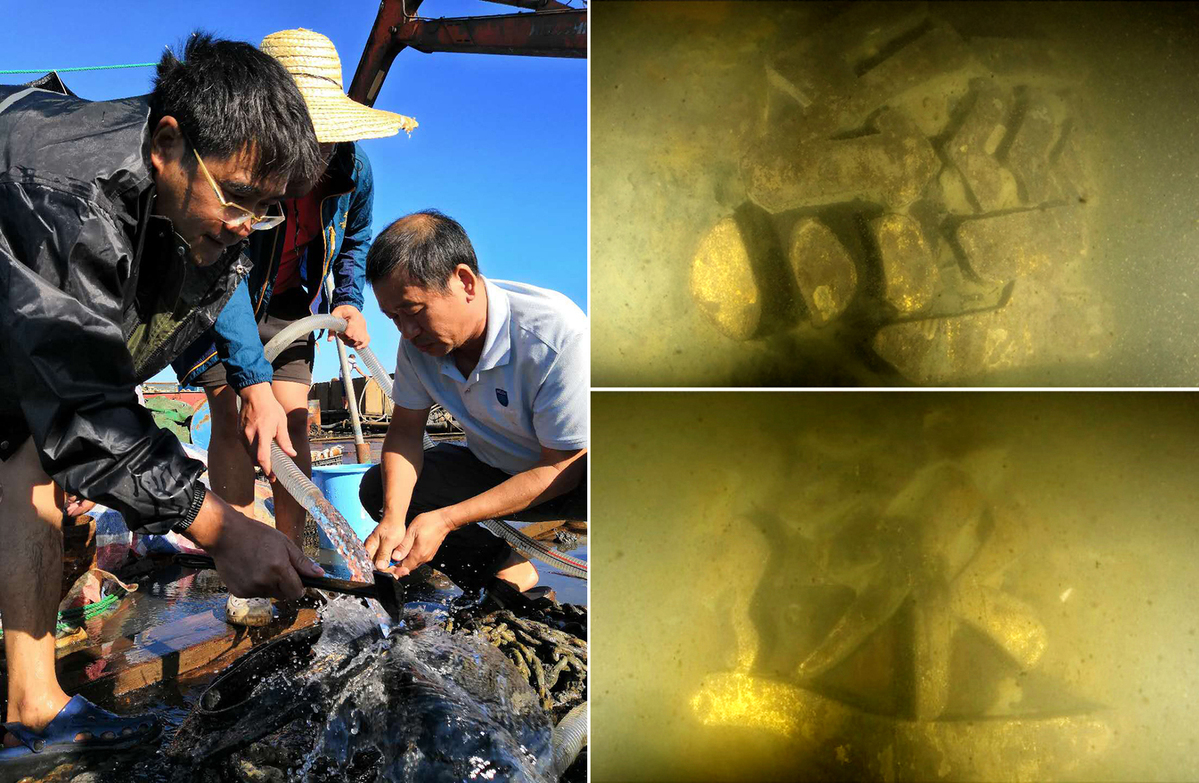Wreckage ID'd as sunken Qing warship


Experts have confirmed that a shipwreck found in waters off the coast of northeastern China's Liaoning province is that of a legendry cruiser sunk during the First Sino-Japanese War (1894-95).
The mighty Jingyuan - spelled "King Yuen" at the time - was an armored cruiser from the Beiyang Fleet, the modernized imperial navy of the Qing Dynasty (1644-1911).
Built in 1887 in Germany's Stettin (now Szczecin, Poland), the ship was 82.4 meters long and had a displacement of 2,900 metric tons. It was lost along with three other vessels on Sept 17, 1894, during the Battle of the Yalu River.
About 200 sailors on the Jingyuan died that day, including its captain, Lin Yongsheng. Only 16 crew members survived.
On Friday, the National Cultural Heritage Administration said research carried out since July had confirmed the ship lies below the sea's surface near the Dalian coast.
"We were running against the clock to identify the wreck because the anniversary of the Battle of the Yalu River was approaching," said Jiang Bo, an archaeologist at the National Center of Underwater Cultural Heritage who led the research.
He said historical files, witness accounts and an old photograph taken by a Japanese sailor before the Jingyuan sank were used to identify the location of the wreck.
On Sept 15, researchers found the most important piece of evidence - two wooden characters jing and yuan gilded in gold, which had been hanging on the side of the ship. These matched old pictures of the cruiser, Jiang said.
Another 500 or so artifacts, including weapons and the sailors' daily effects, have been recovered during the project, which has involved 50 people, including 15 underwater archaeologists.
Jiang said the wreck has been well preserved because it turned upside down when it reached the seabed, leaving most of its upper deck buried in sand.
"Many windows even remain unbroken," he said. "It's like a time capsule sealing history inside."
Blueprints from Germany were used as a reference for the studies, but Jiang said some of the ship's features were not included in the original designs, indicating that adjustments were made to prepare the ship for battle.
"The Jingyuan was one of the world's most advanced cruisers when it was built," Jiang said. "Even the German navy didn't have a ship with so many cutting-edge technologies. It's a crucial reference for us to better understand the world's naval history."
However, for most Chinese people, the discovery will stir thoughts of a grim period in the nation's history, according to Song Xinchao, deputy director of the National Cultural Heritage Administration.
"It returns us to a time of grief, reminding us to be alert and to learn lessons from history," he said.
The Beiyang Fleet, which was almost entirely composed of ships built by Germany and Britain, was considered one of the strongest in Asia. Yet it was annihilated during the First Sino-Japanese War.
From 2014 to 2016, the National Center of Underwater Cultural Heritage also conducted research on the wreck of the Zhiyuan, another cruiser sunk in the Battle of the Yalu River, in waters near Dandong, Liaoning. Relics salvaged from the ship have been exhibited nationwide.
Song said research on shipwrecks from the war will continue long-term and involve comprehensive studies.
Ding Hui, deputy director of Liaoning's culture authority, said a protection zone is planned to the cover area around the Zhiyuan and Jingyuan.
"We want to have a conservation base, particularly for relics from the wrecks," Ding said. "Frequent patrols on the sea will follow. We'll keep a close eye on the sites to ensure their safety."
- National intangible cultural heritage: Dangyangyu kiln Jiao Tai pottery firing
- Woodblock print exhibition held at National Art Museum of China in Beijing
- 5th China Intangible Cultural Heritage Expo held in Shandong
- Nation helps others restore heritage sites
- Last inheritor of China's traditional Hakka architecture
- China's resolve, actions to address climate change not to waver: vice premier
- Chinese premier urges new progress in developing Beijing-Tianjin-Hebei region
- Jinan Moments: Scottish traveler explores tradition and modernity
- Futian to display urban innovation hub building achievements
- Guangdong leadership urges medical staff to save lives after vehicle tragedy
- Beijing judicial authorities raise public awareness to combat smuggling





































